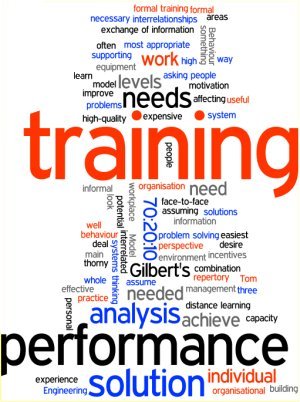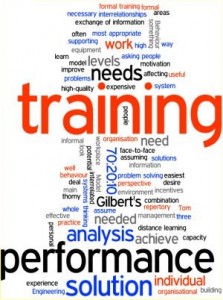Training Needs Analysis is that crucial step that needs to be diligently carried out even before the planning for the design of a new training is commenced. As the name implies, Training Needs Analysis is a systematic process of ascertaining whether there is actually any need of carrying out a particular training and if yes, then determining what the deficiencies or problem areas are that led to the need for this training and are those deficiencies addressable through this training?
The sole focus of any training program is either to impart new knowledge, skills and abilities so that the performance of an individual, a team or an organization as a whole can be taken to a new dimension, or to act as a remedial solution that assists an individual, team or organization to overcome its weaknesses and turn its lagging performance to an improved one. In either way, performance improvement is the intention behind every training program. So, whenever there is an apprehension that there exists a performance problem or gap or there is going to be one in the future, the trigger to carry out Training Needs Analysis (TNA) is pressed.
A TNA will be initiated whenever a gap between actual performance and expected performance of an individual, a team or an organization is perceived or guessed. So the first step of TNA will be to ascertain beyond doubt that an actual gap does exist. Once that is confirmed, TNA will now carry out a systematic analysis to discover the reasons behind this gap – what the deficiencies are that have caused the drop in performance. Once the problem areas are identified, TNA will check whether these areas can be corrected by conducting training. Outcome of TNA will be two categories of needs – training needs that require help of a training program and non-training needs that can’t be resolved by imparting training.
So, what are the various benefits of conducting a TNA? First, it ensures that training is being given for valid reasons. Training needs commitment of money, time and other resources – so a training not backed by any particular need will lead to a waste of all those. But a training that results after a properly conducted TNA is likely to be worth resources spent on it. TNA also helps to set the benchmark for training evaluation, as during evaluation, it becomes easier to check whether the requirements and deficient areas chalked out by TNA have actually been taken care through the training or not. Often it is seen that training participants do not show any enthusiasm to imbibe the learning from the training as they feel that the training content is not relevant for them or it is not going to impact their performance or work-related knowledge. But since TNA ensures that a training is given for an actual performance gap or to enhance performance in relevant work areas, it can be assumed that participant motivation will be higher when the find the training content useful and helpful. TNA also helps in aligning the training programs with organization’s strategic goals.
TNA can be either done in a proactive manner or in a reactive manner. Reactive TNA is conducted when some performance discrepancy is identified. Proactive TNA on the other hand foresees the future – it assesses the future needs of the organization, the needs that may be surface if the business expansion takes place, the needs for empowerment of an employee to occupy a higher position in future, and identifies training requirements based on these future needs.
As we have already discussed, TNA looks at the performance gap and need of relevant training at 3 levels – Organization level, Job or Operational level and Personal Level.
TNA at Organization level takes a critical look at the organization’s mission, vision, goals and objectives and how the organization’s internal environment and culture and the existing employees’ competencies are conducive for the achievement of the organizational goals. So basically it first determines what sort of competencies, i.e. knowledge, skills and abilities are required for accomplishment of organization-specific goals, and then it tries to measure organizational performance and whether the human resources possess those particular competencies. It also judges if the internal environment of the organization and its prevalent culture are acting as booster to or deterrent for the organizational performance. When all these parameters are evaluated, TNA focuses on what type of training is required to overcome the existing weaknesses. If the focus is on further growth and expansion of the organization, then TNA comes up with the training needs that will equip the organization with competencies to cope future challenges.
Operational TNA focuses on job analysis and on identification of key competencies required to perform a particular job or job group in a superior fashion. The information about key competencies can be obtained from Job Description documents, or from job holders or their supervisors. Equipped with that information, TNA can identify the gap areas that are causing inferior performance on that job and determine the skills and knowledge required, if any, that can bridge the performance gap.
TNA on a Personal or Individual level assesses an individual’s performance or whether that individual has required competencies to do meet the expectations of a new or different task. If an individual is showing poor performance, TNA identifies whether lack of particular KSAs is the reason for the same and whether training can address that deficiency. Knowledge about an individual’s competencies can be obtained from various sources like performance appraisal rating and supervisors’ comments, personal interview, psychometric and proficiency tests, assessment centre data etc.
Now, once a TNA is conducted, the outcome of the process is a list of reasons categorized as training needs and non-training needs. Training needs are those needs that have shown a KSA deficiency correctable through proper training. Non-training needs can further be subdivided into:
– KSA deficiency not correctible through training – to address these, measures like job aid, more practice, job change etc. are required.
– Lack of motivation due to lack of reward or recognition – can be addressed by taking a look at organizational practices and installing a system of rewarding and recognizing good performers
– Lack of punishment in case of poor performance – similar approach as above, with use of punishment in form of poor rating, demotion, dip in salary or other benefits etc.
– Non-adequate feedback about performance – accurate feedback needs to be provided on a regular basis
– Other obstacles in system – removal of those obstacles.
So, carrying out Training Need Analysis forms the first step of ensuring increased organizational and personal profitability through heightened performance at every level.





6 Comments. Leave new
Well written
Well explained..
Nice 🙂
Well Written :D/ Good Work
well written
Good work☺?